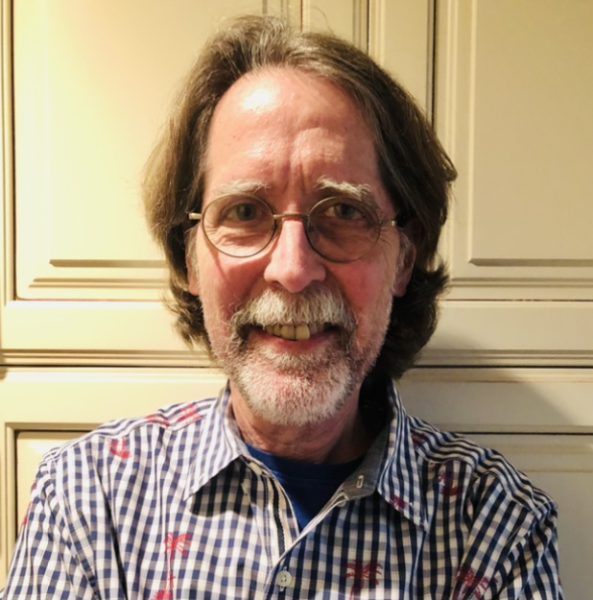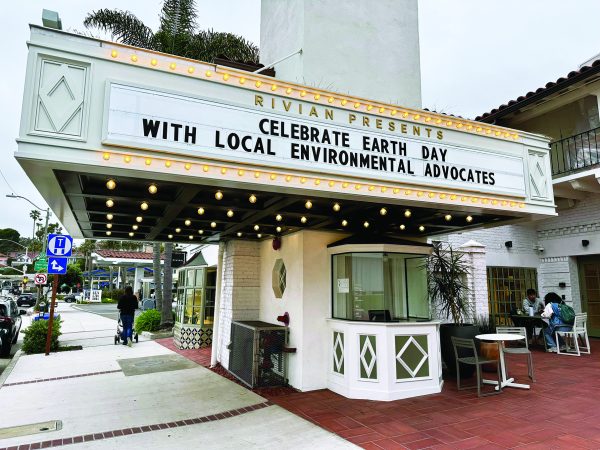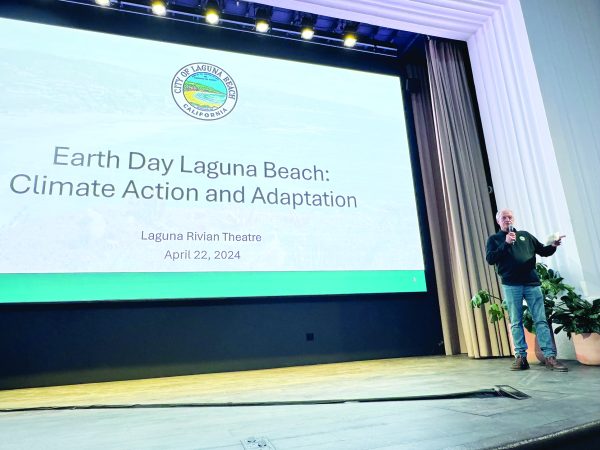Earth Day: Global and Local
 By Gary Stewart
By Gary Stewart
In 5,000 years of civilization, it has only been in the last century that scientists have come to understand the potential for humanity to overwhelm more than just local environmental systems. Our species can now alter global environmental phenomena, such as the chemical make-up of the atmosphere and temperature of the air and the oceans, just for starters. Recognition of this is the purpose of April 22 each year, Earth Day, now in its 54th year. Lacking formal governmental endorsement as a federal holiday, Earth Day events are largely organized by environmental NGOs, such as The World Wildlife Fund, and, of course, the true original, earthday.org.
Earthday.org‘s focus this year was “Planet vs. Plastics.” Coincidentally, as a physician and a member of Climate Health Now, I attended a presentation on the use of plastics in the healthcare industry earlier this week. The introduction provided a context for how surrounded we are now by nanoplastics (super-small plastic bits) – they have been found at the top of Mt. Everest and in breast milk. The health implications are ominous. A recent study of patients with blocked arteries found that 1) a large percentage of these blockages have nanoplastics in them, and 2) patients with nanoplastics in their blockages were four and a half times more likely to have a heart attack, a stroke, or die, compared to patients who did not. This is a highly significant measure of serious health risk.
At earthday.org, a short video offered the following call to action: No more plastic in our food. No more plastic in our lives. We absorb it, eat it, and breathe it. Plastic is toxic. And now it’s personal. The plastics industry knows it. They’ve known for decades. Plastic may cause chromosomal and reproductive system abnormalities, adult-onset diabetes, impaired brain and neurological functions, cardiovascular system damage, obesity, cancer. Our goal is 60% reduction in plastic production by 2040. Take action. Three simple acts, endless impact. 1) Support the Global Plastics Treaty. 2) Reject Fast Fashion. 3) Join the Great Global Cleanup. #PlanetvsPlastics; Earthday.org/social-2024.
That’s global. What about local folks? No worries. The Earth Day event at Rivian, organized by the Laguna Canyon Conservancy, was a string of organizations doing volunteer work to improve our community’s shared life.

Ginger and Tom Osborne of Citizens’ Climate Lobby kicked it off by describing and inviting participation in their group’s nonpartisan advocacy for carbon pricing, healthy forests, electrification and permit reform. Coastkeeper protects “swimmable, drinkable, fishable water” and promote regional watershed resilience, relying upon their five pillars of Education, Restoration, Enforcement, Advocacy and Research. They have a host of programs, including Kids Ocean Day, Cleanup OC, Berm Buddies and Environmental Policy. They are also deeply involved in creating and monitoring the Marine Protected Areas, and it is making a measurable difference. The Laguna Bluebelt Coalition is equally involved with the MPAs and the carbon-capturing kelp forests they harbor and hosts their annual photo contest (a few years ago, I purchased one of the awesome award-winning shots). Another local nonprofit, the Laguna Ocean Foundation, has the tidepool docent program and the ambitious Aliso Creek Estuary Restoration Program and renovation of Aliso Beach Park. They motivate “Citizen Science” – maybe you can be a researcher!
Assistant City Manager Jeremy Frimond spoke at length about what the city is doing to respond to climate change. He went through the city’s Climate Action and Adaptation Plan: reduce greenhouse gases, reduce harms resulting from the climate crisis by identifying vulnerabilities (Hint: wildfire at the top of the list), and achieve sustainability. The multi-step process has just reached the “Develop Strategies” phase.

The presentation then turned to our local high school and LCAD students. High school students presented thoughtful and informative videos, and we heard about the LHS FLOW (Fire, Land, Ocean, Water) program. The college students reviewed repurpose design projects that were imaginative and inspiring.
Lastly, Gene Felder, founding board member of the Laguna Canyon Conservancy, reviewed the organization’s rather remarkable number of actions since 1987 that, in the aggregate, are a big part of what makes Laguna Beach so unique. Stopping development of Laguna Canyon by the Irvine Company, Proposition 12, train maintenance, education of school children, funds to various other local nonprofits, preservation of the Dana Point headlands, creation of the Bolsa Chica Ecological Reserve, the Banning Ranch Conservancy, the list was endless.
Underlying the entire evening was the refrain – Join Us! Keeping a habitable planet takes more than a village. It takes an Earth. Every day.
Dr. Stewart, a native of St. Petersburg, Florida, stopped in Nashville and St. Louis for education before arriving in Southern California in 1977. A happily married internal medicine physician with three accomplished children, he is equally enthusiastic about the arts (piano player, art collector, bachelor’s in English, widely read), the sciences (physician, climate activist with Citizens’ Climate Lobby) and fun.




